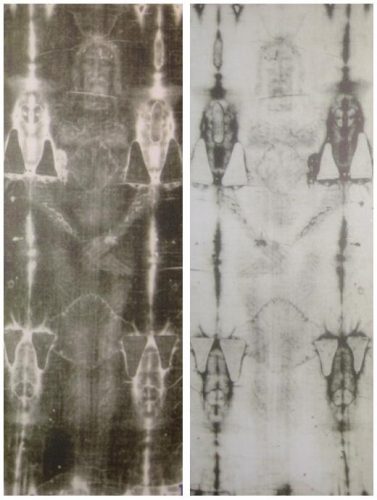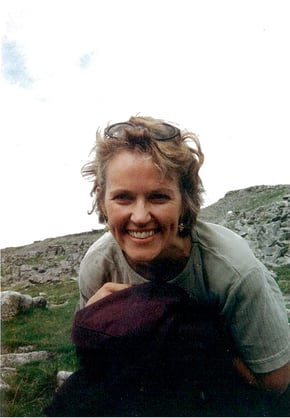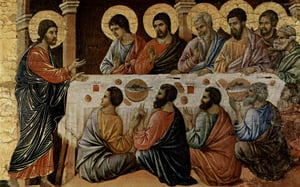Last year, George Weigel’s Wall Street Journal article, “The Easter Effect,” provided an instructive glimpse of the first Christians’ response to encounters with Jesus in His glorified, resurrected body.
Weigel first wonders: how did a ragtag band of nobodies from the far edges of the Mediterranean world become such a dominant force in just two and a half centuries?
He considers the conclusions of Rodney Stark of Baylor University, who claims that “Christianity modeled a nobler way of life than what was on offer elsewhere in the rather brutal society of the day.” For example, Weigel writes:
In Christianity, women were respected as they weren’t in classical culture and played a critical role in bringing men to the faith and attracting converts. In an age of plagues, the readiness of Christians to care for all the sick, not just their own, was a factor, as was the impressive witness to faith of countless martyrs. Christianity also grew from within because Christians had larger families, a byproduct of their faith’s prohibition of contraception, abortion and infanticide.
Weigel is not satisfied, however, with that answer. What about those first Christians in Jerusalem?
The disciples on the road to Emmaus did not recognize Jesus, nor did Mary Magdalene in the garden near the tomb. Even after the startling news that He was not in the tomb, when He appeared in their midst in the upper room, the disciples thought He was a ghost! After that, He appeared on the shore while the disciples were fishing, and they did not recognize Him right away.
In other words, it took time for them to grasp the meaning of this most singular, even shocking, event. These early Christians, however, were so convinced of its reality that they literally staked their lives on it.
In a homily from Holy Saturday 2006, Pope Benedict remarked:
When Jesus spoke for the first time to the disciples about the Cross and the Resurrection, as they were coming down from the Mount of the Transfiguration, they questioned what "rising from the dead" meant (Mark 9:10).
We, too, might be wondering: what does it all mean?
The Shroud of Turin and the Resurrection
The total weight of multiple studies, medical, archaeological, chemical and physical, clearly indicate a direct connection between the Turin cloth and the Passion, Death and Resurrection of Christ. There is no other explanatory hypothesis for the existence of this cloth, for the information that is contained in it and for the very fact that it has been carefully kept and venerated through the centuries. The undeniable fact that nobody has been able to duplicate the image, or to even explain it satisfactorily by any known process, is also reason enough to conclude that only a unique event in history seems acceptable as its cause. -Fr. Manny Carreira, S.J.
During Easter Week, it seems fitting to look at the Shroud of Turin, this unusual relic, and ask, “What is the image meant to tell us?”
In a previous post, we examined the verifiable scientific facts relating to the Shroud of Turin. The most intriguing, baffling, feature of the Shroud surrounds the image and various explanations for its formation.
 Printing (right) and a negative (left) of the Shroud of Turin
Printing (right) and a negative (left) of the Shroud of Turin
The image is a faint sepia colored outline of a crucified man with dark brown stains—confirmed now to contain AB blood particles—in anatomically correct locations matching descriptions of Jesus’ scourging and crucifixion found in the Gospels (for more details see Section I).
Fr. Spitzer discusses the hypotheses regarding the formation of the image in great detail here (see pages 21-31). Of the multiple puzzling features, perhaps the most startling is that there is a double image on both the front of the cloth and on the reverse side, but no image on the fibrils in the middle of the cloth.
According to Fr. Manny Carreira, a physicist who wrote on the Shroud in 2010, natural explanations have failed to account for these features. Fr. Carreira comes to the inescapable and startling conclusion that “no radiation of any type [that we know of], even if miraculously produced, has the proper characteristics of propagation and energy to explain everything we observe in the Turin image.”
The mystery of this image continues to drive researchers to investigate and propose explanations for its formation. The most recent suggested cause is vacuum UV light with the equivalent power of 14,000 excimer lasers which, with all of our 21st technology, we cannot yet produce! Not only that, but the only way to explain how the image is on both sides of the cloth, with no image in between, is if it passed through the body wrapped in it. How can cloth pass through a material body?
Carreira is not surprised by his own conclusion because the resurrection, like creation, is a unique event and can hardly be reproduced in a laboratory. In other words, the Resurrection is the first example of a material body becoming a glorified body--not just a dead body brought back to life!
Jesus: the “first fruits of those who have fallen asleep”
Remember, Jesus’ resurrection was a unique transformative event changing Jesus’ material body into a glorified body—one that could eat food and be touched, but was able to pass through walls and doors and appear and disappear.
We have no direct experience of a glorified body that can exist and operate outside the physical limits of time and space.
But those first witnesses of the Resurrected Jesus did, and it changed the way they lived.
So it is a reasonable inference that the Shroud is a “relic” of the Resurrection and our 21st century encounter with the risen Lord.
It is a promise to each of us of a future transfigured life:
Now I am going to tell you a mystery: we are not all going to fall asleep,but we are all going to be changed, instantly, in the twinkling of an eye, when the last trumpet sounds. The trumpet is going to sound, and then the dead will be raised imperishable, and we shall be changed. -1 Cor 15: 51-52
May you rejoice in the glory and significance of this as we bask in the light of the Resurrection!
Cover Image: Duccio di Buoninsegna / Public domain
Read Also:
Historical Evidence of Jesus’ Resurrection
Verified Scientific Facts supporting the Authenticity of the Shroud of Turin

